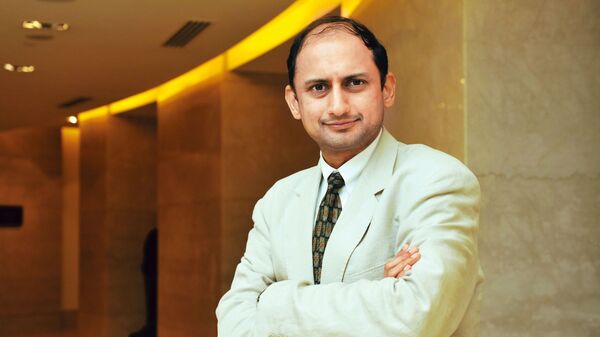China’s digital payments kicked off in earnest when Alibaba integrated Alipay in 2003 to scale the e-commerce business and Tencent integrated Tenpay in 2005 to support its messaging and gaming app. The transition from cash to digital payments began from 2011 with the launch of Chinese super apps.
Tencent’s WeChat, originally a messaging application, forayed into payments and e-commerce, food delivery, ride-hailing and travel to become one of the world’s largest mobile apps, with more than 1.2 billion monthly active users. Over 45 billion messages were sent every day on it and $400 billion were transacted in 2021. China’s digital economy, second in size only to that of the US, crossed $5 trillion or over a third of its GDP in 2019.
China wanted to become a digital superpower, so it withdrew the permission it had given to foreign digital companies and reserved its vast market for home-grown companies, which took advantage of the lack of competition from Facebook, Amazon, Apple, Microsoft and Google and grew quickly.
Apart from keeping foreign competition out and investing in hardware technologies, including chip-making, China’s user base growth was helped by affordable data and widespread smartphone ownership.
India’s digital economy is estimated to comprise about 12% of GDP. Reliance Jio launched in 2016, with free services for the first year, followed by subsidised prices for the second. The cost of data dropped 95%. Yes, the telecom industry’s revenue dropped 30% and the industry went from having 10 players in 2016 to just four in 2019, but increased internet affordability helped create a market for e-commerce, payments, food delivery and OTT content.
The point is, as Acharya argues, that India has chosen a public-utility approach for its digital model. India views the system of payments and settlements related services as a public good that ought to be provided publicly in contrast to the private-sector-led models in the US and China. Private firms make up the US digital economy. Of the top 30 digital companies by market capitalisation in 2019, 18 were U firms.
India’s digital transformation on the other hand is a public-private partnership (PPP) success story. The digital ecosystem is designed around Aadhaar, the unique identity number that was rolled out from September 2010 and has now been provided to over 1.2 billion Indians.
Private-sector banks perform digital authentication through Aadhar. The Unified Payments Interface (UPI), a public utility, provides a platform for payments and settlements between individuals and businesses, enabling seamless portability between their banking solutions at the back end. Payments are directly linked to bank accounts. The Open Network for Digital Commerce (ONDC) is a PPP in the e-commerce space.
What clicks for the India model? The India Stack is the world’s first model with digital public infrastructure in four technology layers – providing individuals with digital identities, an interoperable payments system for real-time transactions, virtual documents and verification, and personal data management with privacy safeguards.
These layers interface with each other to create a digital ecosystem in which solutions for both business and public services can be designed, such as the Open Credit Enablement Network and the aforementioned ONDC.
The digital public infrastructure model is low-cost, affords interoperability and scalability, and has built-in safeguards against monopolies. Models in other countries – the Big Tech variety, for instance – don’t have these advantages.
As a result, India’s transition to non-cash payments has outpaced those of many advanced economies despite low levels of literacy, and especially financial literacy. In 2008, 17% of Indian citizens had a bank account. That number is now over 80%. While digital payments are rising, the use of cash is declining in the overall share of payments since 2020 for the first time. This is a significant turning point for the economy.
Roughly 300 million Indians use UPI, which means India has the world’s second-largest digital payments network after China. Despite the low income per head, the total annual value of digital transactions exceeds that of many developing countries. An RBI study in December 2022 showed that the digital economy grew 2.4 times faster than the overall economy between 2014 and 2019.
India’s digital model has the potential to alter the trajectory of its development. The model is proving useful in areas where there are government failures, such as the transfer of cash benefits to households, or where markets have failed, such as provision of credit to micro, small and medium enterprises (MSMEs).
Acharya’s paper touches on the public digital infrastructure model’s potential to accelerate the formalisation of such businesses. Lending technology built on the digital plumbing architecture has improved credit access substantially for MSMEs, which have historically struggled to access formal financing. (Only 0.6 million of 64 million MSMEs, typically those with a turnover above $4 million, received such credit.) The adoption of cashless payments and the increased share of fintech firms in lending has made it possible for more than 60,000 MSMEs to access formal credit.
With MSME transactions captured electronically on private or government e-commerce platforms, they can be collateralised for account-receivables financing. Acharya points out that this can be used to mitigate MSMEs’ liquidity risks. As the India stack gets a data layer, the account aggregator network will enable the pooling of a digital view (DigiLocker) of all financial holdings data, based on a secure consent architecture. This will allow for algorithmic credit scoring, unlocking enormous potential for growth.
Download The Mint News App to get Daily Market Updates.
More
Less
#India #Stack #unlocks #potential #rapid #formalisation #MSMEs #Viral #Acharya
